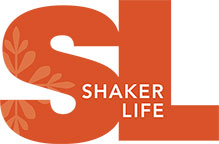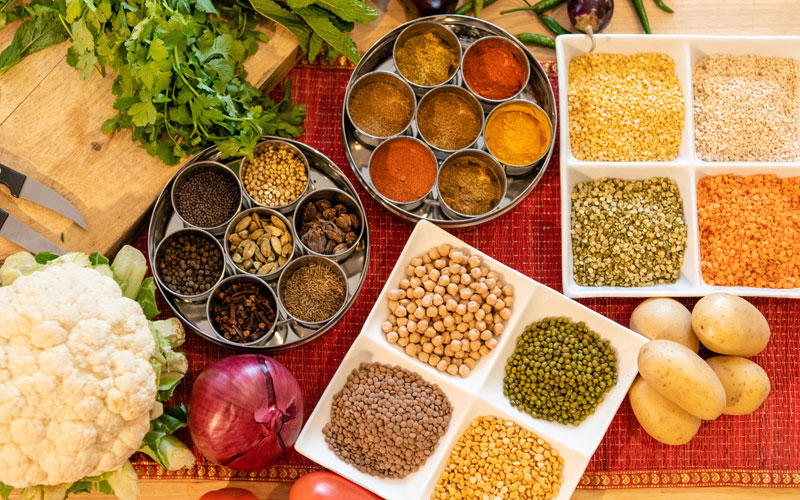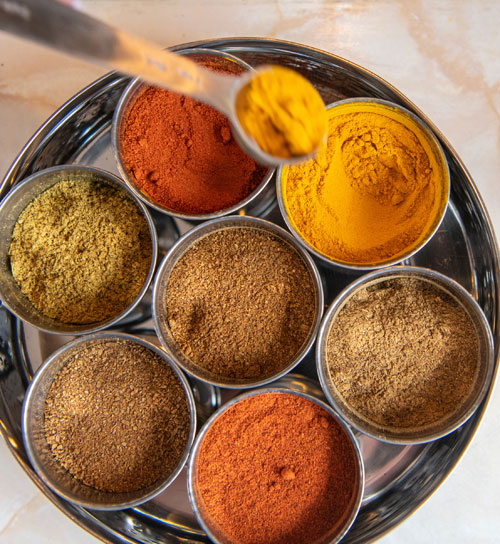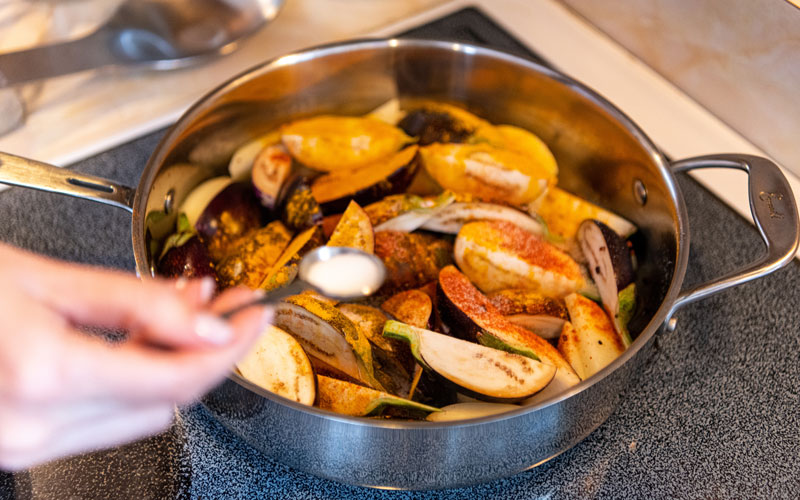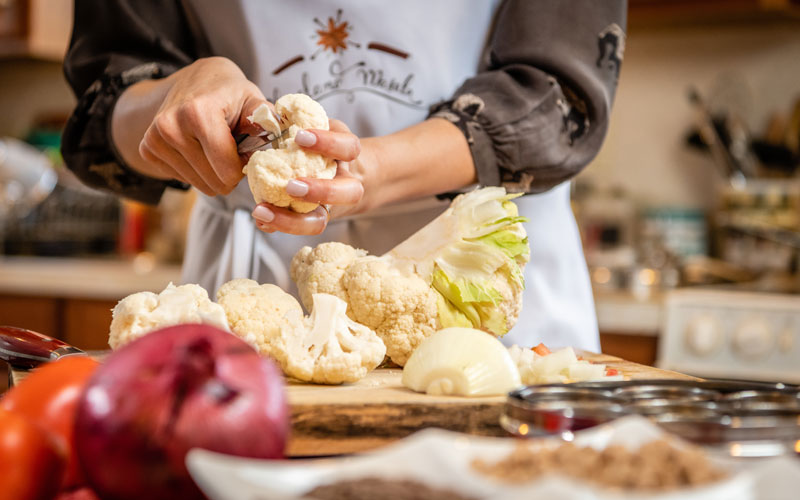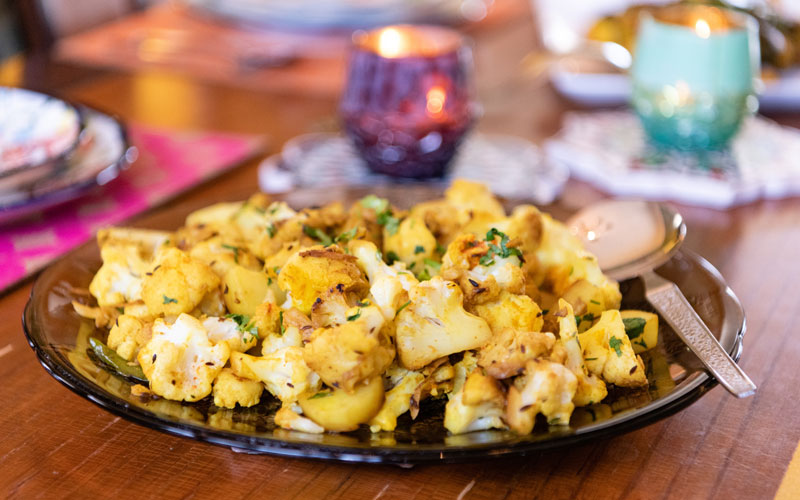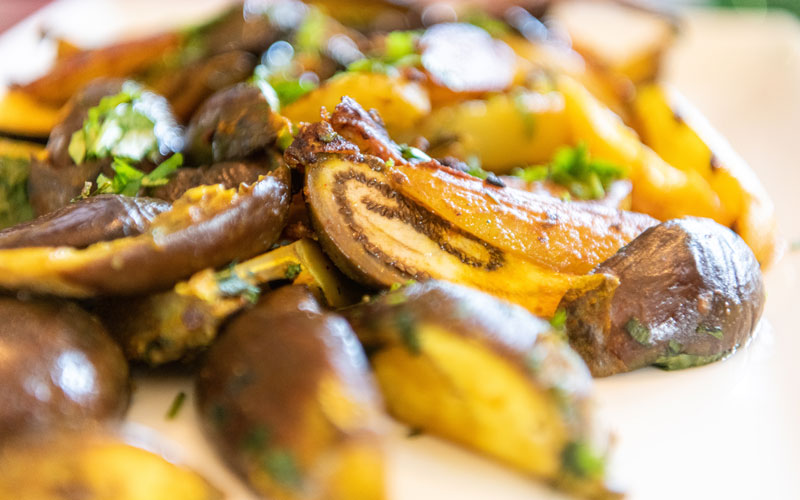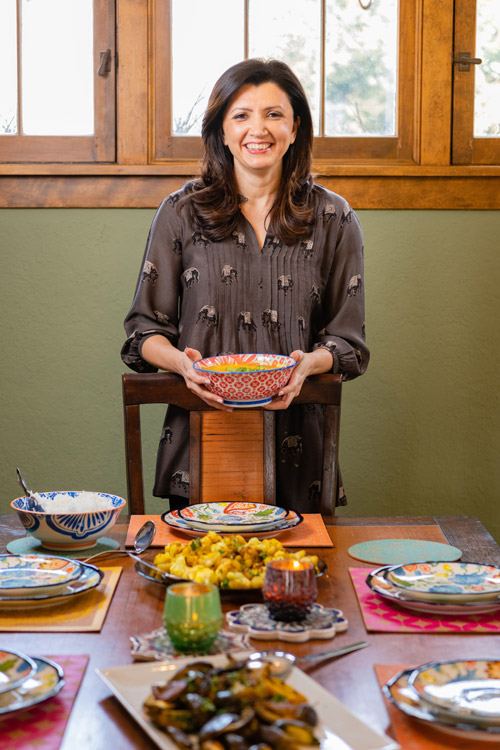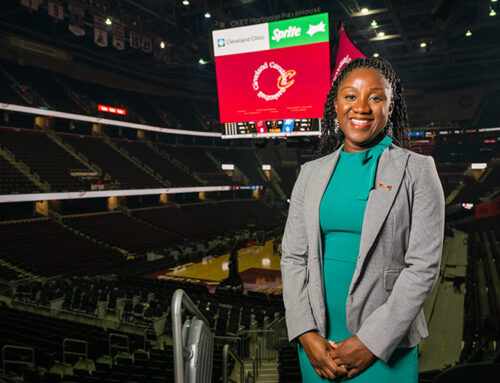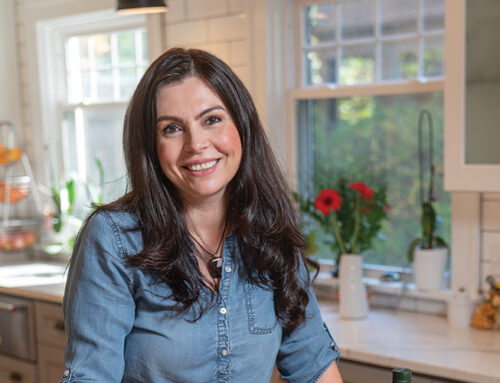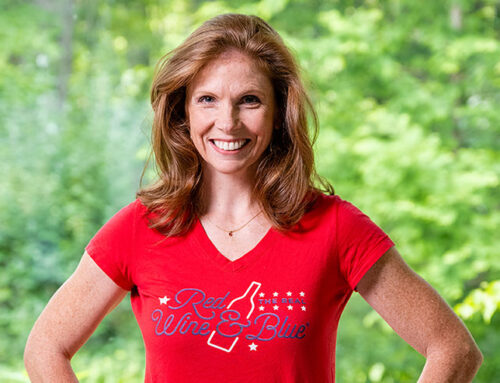Whether you eat to live or live to eat, you can learn a lot from Sahar Rivzi.
By Jennifer Proe

Photography by Joe Miller.
Sahar Rizvi met me at one of her favorite locations in the Van Aken District, Nature’s Oasis, on a wintry Cleveland day. Though we had previously talked only by phone and email, she greeted me with the warm embrace of a long-time friend. Through her business, Cleveland Masala, she offers both holistic wellness and nutrition coaching and private cooking lessons – and I was eager to learn more about both.
From our previous conversations, I knew she was a proponent of the ancient Indian health practice of Ayurveda, and that she espouses the philosophy of food as medicine. As I logged onto the Nature’s Oasis website to access their WiFi, I was greeted by this quote from Hippocrates: “Let food be thy medicine, and medicine be thy food.”
Clearly, we were in the right place for this conversation.
Over the next hour or so, Rizvi gave me a crash course in Ayurveda, got me excited to try Northern Indian cooking, and gave me insight into what it’s like to put down new roots as an immigrant in Shaker Heights.
What brought you here from India?
I met my husband in India, where we were married, and moved here 18 years ago. He works at the Cleveland Clinic. I arrived in Cleveland directly from India in June, when it was nice and green and lovely. I could not imagine that winter was coming; that was a rude awakening. I grew up in New Delhi and went to boarding school in the environs of the Himalayas, where we would only get a smattering of snow. The first winter here was exciting, because it was the first time I really experienced snow. Now I’m over it.
Where in Shaker do you live?
We’ve lived in three different neighborhoods and loved them all. We started off in Mercer, then moved to Lomond where our kids went to Carol Nursery School. That was really my initiation into Shaker; I met all these wonderful mothers, and we would hang out for hours on the playground. I also made some long lasting friendships at the libraries, during Play and Learn and story hour.
We then moved to Onaway, which is literally like a little Utopia with the three schools there. We have two boys, one at Woodbury and one at Shaker Middle School, and a rescue dog, Layla. I love that our boys can walk to school, or ride bikes up to the Van Aken District to meet friends at Mitchell’s. Being an immigrant and losing one’s home base, one feels a need to establish roots for oneself and one’s family. Shaker Heights provided us with that safe, inclusive, welcoming community.
What put you on the path to becoming a wellness coach?
This journey did not come naturally to me. My father was very active, but developed diabetes at the age of 52. He had heart disease and a stroke at 62, and he passed away two years later. That was a wakeup call for me, just seeing how completely the illness took over him. I had just had my second son and was juggling motherhood, so I enrolled in the Institute of Integrative Nutrition in New York City as a distance learning student. I went there for conferences where I was exposed to the wellness industry giants, and became certified in 2017. Since then I have done wellness talks and workshops at my mosque, Muslim Association of Cleveland East, and at yoga studios. I also do private sessions.
What is Ayurveda, and how does it inform your wellness coaching?
“Ayur” means life, and “veda” is wisdom, so it’s the wisdom of life. It’s a way of living which constitutes healing practices, nutrition, and everyday wellness. It goes hand-in-hand with the practice of yoga for complete mind-body wellness.
Ayurveda dictates that everyone is born with their own perfect body composition, or dosha, which over time becomes imbalanced due to stress, toxins, unhealthy eating, etc.
When I work with someone as a counselor I first do a one-hour assessment with a set of questions about lifestyle factors, eating habits, and stressors. Then I can assess your dosha and help with what nutrition you need to get back into balance. For example, you may be having a problem with your digestion because there is too much acidity in your diet; I can help you figure out what foods would or would not be good for you.
Did you start offering cooking classes as an extension of your nutrition coaching?
It actually started as a result of a fundraiser for the Onaway PTO. They asked if anyone had a special talent they could offer for the silent auction. I was already enrolled in the holistic health program and was itching to do something around that, so I offered a private cooking class for four people. I believe the bid started at $50 and it went for over $350. That’s when I thought, “Maybe I can do something more with this.”
Having other moms supporting me was a huge help. Shaker moms are a powerhouse, the way they move and implement things. They showed me that you can be a stay-at-home mom and have a successful side gig. That was very empowering for me.
My family in India is actually quite amused because I was never much of a cook. But when I first moved here, that’s what I missed the most, those tastes and flavors of home. International calls were quite expensive and there was no FaceTime, so I had to learn from trial and error. Now, my kids like to help out in the kitchen and my older one has no qualms about taking his Indian food to school for lunch.
What are the cooking classes like?
What I offer is a fun and interactive experience that can be as light and easy as just observing with a glass of wine, or participatory. I come to your home, bring all the ingredients, provide hands-on instruction, and leave behind a starter kit of spices and recipes. It can be a one-time class or a series of classes with different themes. I also did a fun class for a book group that was reading a novel by Thrity Umrigar and they wanted to learn about the Indian street food mentioned in the book.
As I’m cooking, I explain about the spices I’m using. For example, people may know that turmeric has anti-inflammatory properties, but it has to be consumed with fat and spices. Likewise, if you just throw cumin in the pot, it won’t release any medicinal properties – you have to infuse it with warm oil.
I also do a lot of storytelling about my childhood in India and explain why we eat sitting on the floor, without cutlery. We are not putting any barrier between us and our food. Every bite is a different bite when you are eating with your hands. When you eat with your fingers, there is a direct connection with food. You are more mindful of your eating habits and you have a feeling of being fuller and more satisfied.
What do you want people to take away from their time with you?
Good health starts in the kitchen. You can spend hours in the gym, but without good eating, it doesn’t matter. The whole idea of mindfulness around food is so important. It doesn’t have to be Indian food, it’s the idea of getting people to connect more, and getting back into the kitchen to make whatever food you enjoy making. You don’t have to wait until Thanksgiving to bring people together.
Originally published in Shaker Life, Spring 2020.
